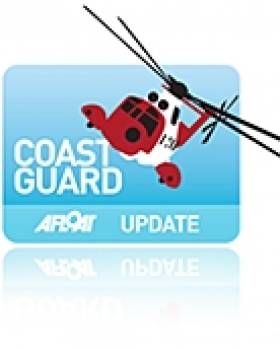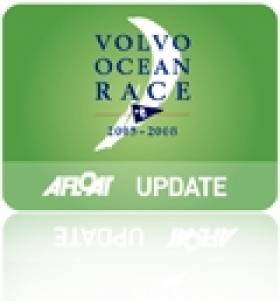Displaying items by tag: women
Rowing Ireland Seeks Leinster Women's Development Officer
#Rowing - Rowing Ireland have a vacancy for the position of Leinster Women’s Development Officer to be based in Dublin.
The Leinster Women’s Development Officer will be tasked with introducing women to the sport of rowing and to general fitness through the facilitation of a schools indoor rowing programme. The funding for this position is supported by the Irish Sports Council's Women in Sport Initiative.
The programme will encompass the development, co-ordination and delivery of indoor rowing in schools and eventual linkage to local rowing clubs. The appointed individual will have lead responsibility for all matters pertaining to the successful delivery of the programme, which will necessitate development of effective partnerships working with clubs, schools, athletes, coaches, teachers, parents and/or guardians.
The successful candidate will positively promote Rowing Ireland and raise the profile of the sport of rowing.
The main areas of responsibly for this position are:
- To develop and co-ordinate the delivery of a schools indoor rowing programme for Rowing Ireland as detailed in the Women in Sport proposal;
- To mobilise, educate and manage volunteers involved in the programme;
- To provide a lead role in managing and disseminating information to all key partners;
- To maximise and manage all media opportunities to ensure the positive profile of rowing is promoted at all times;
- To ensure there is linkage from the indoor school programme to local rowing clubs;
- To attend training courses, training camps, competitions and other events (in an official capacity) as agreed with the Rowing Ireland CEO in advance;
- To review and develop new events that will attract female participation;
- To work in partnership with Rowing Ireland clubs to ensure appropriate on-water activities are available during holiday periods;
- To monitor and evaluate the impact of interventions and prepare written and oral reports as necessary relating to the post; and
- To work closely with the Rowing Ireland CEO.
This job description is not to be regarded as exclusive or exhaustive. It is intended as an outline indication of the areas of activity and will be amended in the light of the changing needs of the organisation.
The successful applicant will be self-motivated, personable and highly organised. The candidate should ideally have an interest in rowing and excellent interpersonal abilities. Strong communication skills and proficiency with Microsoft Office are essential.
Please send all applications to Hamish Adams, CEO, including your CV and cover letter (as one document) via the 'Apply Now' link on this page by 5pm on Friday 7 February 2014.
Interviews for selected applicants are scheduled to take place in Dublin on Thursday 13 February 2014.
#Coastguard - Last Friday 9 August, the Shannon-based search and rescue helicopter Rescue 115 flew its first missions with an all-female flight crew in pilot Captain Dara Fitzpatrick and co-pilot Captain Carmel Kirby.
Capt Fitzpatrick is the chief pilot for Rescue 117 at the Waterford base and was on transfer to Shannon to build up flying hours on the new helicopter type, the Sikorsky S92, which is due to replace the S61 in Waterford in mid-September.
Capt Kirby, meanwhile, is scheduled to become the manager of flight operations for all the helicopter SAR bases later this year.
This was a historic occasion for the Irish Coast Guard as this was the first all-female SAR chopper crew, and they carried out two missions on their shift – one a cardiac case from West Cork who is recovering well at Cork University Hospital, the other a aero-medical transfer from Cork University Hospital to Temple Street of a critically ill five-year-old child.
Coastguard statistics show a 45% rise in the number of incidents to 1,572 missions by the end of July this year, and the total is expected to break 2,000 as early as October - more than any individual year since records began.
Aside from the good weather that's brought so many more people out on the water than usual, another factor in this increase is the trial aeromedical service for the HSE - with air ambulance missions up a whopping 925% this year.
The Shannon rescue helicopter has so far flown an incredible 187 missions, more than double the number it had flown in the first eight months of 2012.
New Design Brings Women's Return to Volvo Ocean Race
#VOLVO OCEAN RACE - The next edition of the Volvo Ocean Race will feature an all-woman crew for the first time since 2002, the Galway Advertiser reports.
The first team to declare for the race - which kicks off in Alicante two years from now - is backed by the Sweden-based global paper products company SCA, and will take delivery of the first new one-design boat for the race in 2013.
As previously reported on Afloat.ie, the new design VOR 65 - priced at €4.5 million, about 20% less expensive than the 70-footer that ended its run in Galway this summer - was developed with the idea of reducing the costs of competing in the gruelling round-the-world yacht race.
Another benefit of the new shorter, lighter design is that it puts less of an emphasis on physical strength, meaning that woman can once again be competitive in the race.
All-female crews in the next edition of the race will be allowed two extra crewmembers under VOR race rules.
"I'm very pleased to see a women's team back in the race," said Volvo Ocean Race CEO Knut Frostad. "The lack of women in the last few editions of the race has meant we haven't been representing half the population of the human race."
According to France24, four all-women teams have taken part in the race since 1973, when it was known as the Whitbread Round the World Race, but the physically demanding VOR 70 introduced in 2005 effectively pushed women out of the contest.
The SCA team is expected to be one of at least eight taking part in the next edition of the race, although it is unlikely that Galway will see its return in the near future.
The Galway Advertiser has more on the story HERE.
Irish Women Power into World Under-23 Rowing Semi-Finals
Ireland’s two women’s boats, the lightweight double scull and the single scull, will both compete in the semi-finals at the World Under-23 Rowing Championships in Amsterdam after good results in repechages today.
Claire Lambe and Sarah Dolan passed three boats to win an exciting repechage of the lightweight double scull. Ireland were in fourth place, outside a qualification spot for the semi-finals, coming up to half way, but they made a powerful move around 1250 metres, and they swept past Italy and the Czech Republic over the next few hundred metres. In the closing stages they then passed Romania to win.
Lisa Dileen finished second in the repechage of the single scull. She was in a comfortable second place at 1500 metres, but actually passed Nicole Beukers of the Netherlands to lead in the closing stages, before the home favourite battled back to win by .35 of a second.
World Under-23 Rowing Championships, Day Three (Irish interest)
Men
Lightweight Single Scull – Quarter Final Four: 1 United States (A Campbell Jr) 7:11.51, 2 Greece (P Magdanis) 7:14.64, 3 Peru (R Leon Garcia) 7:20.45; 4 Ireland (J Mitchell) 7:33.62, 5 Iraq 7:40.79, 6 Armenia 8:00.14.
Women
Lightweight Double Scull – Repechage (First Three to A/B Semi-Finals): 1 Ireland (S Dolan, C Lambe) 7:24.04, 2 Romania 7:24.63, 3 Italy 7:26.92; 4 Czech Republic 7:35.46, 5 Tunisia 8:00.09.
Single Scull – Repechage (First Three to A/B Semi-Finals): 1 The Netherlands (N Beukers) 7:45.46, 2 Ireland (L Dilleen) 7:45.81, 3 Greece (A Nikolaidou) 7:52.71; 4 Latvia 8:06.32, 5 USA 8:11.64.
































































